Grilling fish can be an intimidating endeavor. Most fish are delicate and overcook easily, and the harsh conditions of the grill can cause the fish to break up into an inedible mess. However, cooking fish on the grill does not have to be difficult! Just follow these general guidelines for success.
How to Grill Fish: Understanding the Basics
Fish is a delicate meat, and most of the small white fish found at supermarkets are unsuitable for grilling because of their light profile. Because of the relative lack of fat and collagen in their muscles, fish tend to flake apart and overcook easily. For the best fish on the grill, look for a more robust fish such as salmon or tuna. Halibut and sturgeon are also excellent choices, along with mahi mahi, swordfish, and shark. If you are new to grilling fish, you should avoid smaller fish like tilapia and trout because of their tendency to fall apart on the grill grate.
How to Grill Fish: Citrus Salmon
Citrus flavors pair well with the robust flavor profile of salmon. Properly grilled, this recipe produces a rich and tender fillet that flakes apart with just the right amount of moisture. One thing to note about salmon is its place of origin. In the United States, salmon comes either from the Atlantic or North Pacific. Remember that Atlantic salmon is almost always a farmed breed, while pacific salmon is caught wild. Wild salmon generally out-flavors it’s farmed counterpart, so buy pacific salmon when you can.
1) If your salmon is frozen, defrost it in the refrigerator if possible. If you do not have time to defrost the salmon in the refrigerator, place it in a bowl under cold running water. Never defrost salmon in the microwave. This will ruin the fish.
2) Sprinkle a coarse citrus seasoning blend on both sides of the salmon. Wrap loosely in aluminum foil.
3) Grill the salmon on a 350 degree grill for about 20 minutes, or until the fish flakes easily with a fork.
4) Mix some of your citrus seasoning with mayonnaise for an easy dipping sauce that enhances the flavor of the fish. 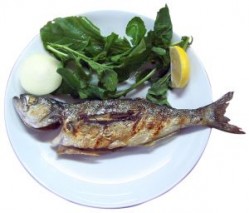
How to Grill Fish: Planked Halibut
Purchase a good set of cedar grilling planks for this recipe. Remember to soak the plank in water before grilling in order to get multiple uses from the plank.
1) Preheat the grill to between 350 and 375; soak an appropriate number of grill planks in water.
2) Season both sides of the halibut fillets with salt and pepper. Lay fresh dill on top of the fish, and then thinly sliced lemon on top of that.
3) Grill the halibut on the planks until it flakes easily with a fork, usually around 15 to 20 minutes.
4) Serve with freshly squeezed lemon juice.
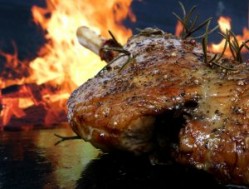
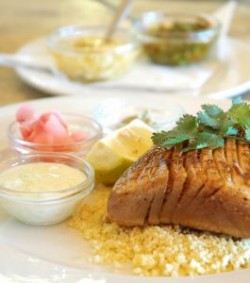
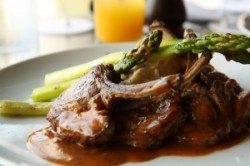


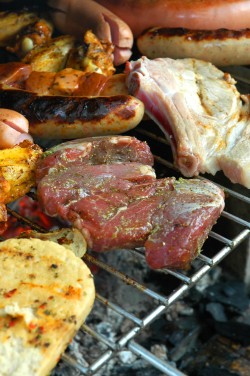
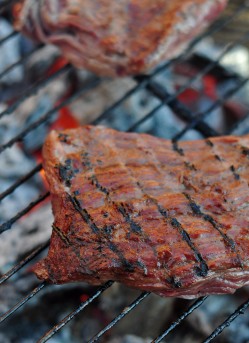
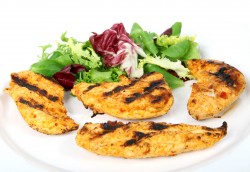 The best recipe for grilled chicken is no recipe at all. This is not to say that you shouldn’t measure your ingredients, or even use recipes as a guide, but strict adherence to a recipe will tend to impede your success as a chef. The best way to procure delicious chicken on the grill is to begin by deciding what flavor and texture you want. Remember that the best meals have a variety of complementary flavors and textures and plan accordingly.
The best recipe for grilled chicken is no recipe at all. This is not to say that you shouldn’t measure your ingredients, or even use recipes as a guide, but strict adherence to a recipe will tend to impede your success as a chef. The best way to procure delicious chicken on the grill is to begin by deciding what flavor and texture you want. Remember that the best meals have a variety of complementary flavors and textures and plan accordingly.